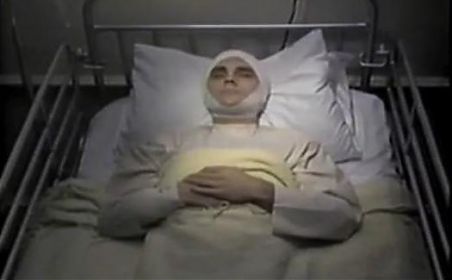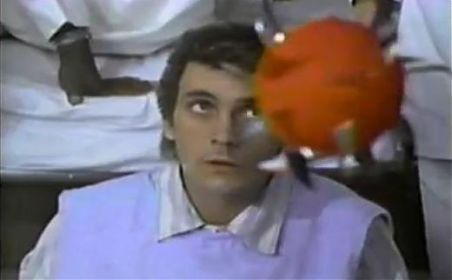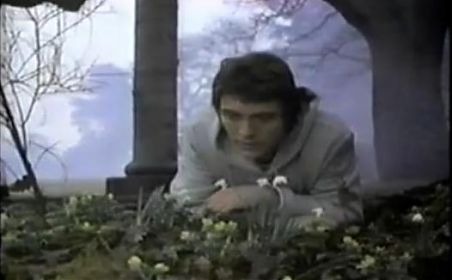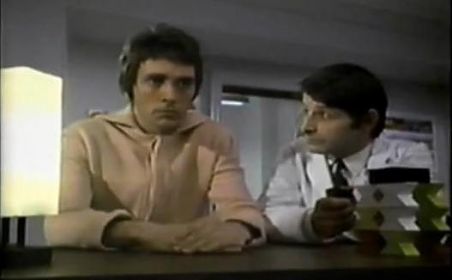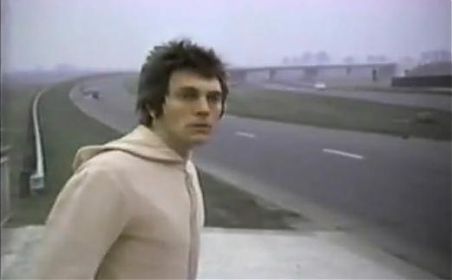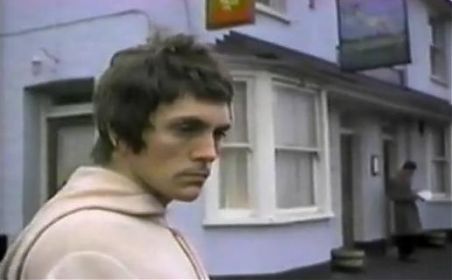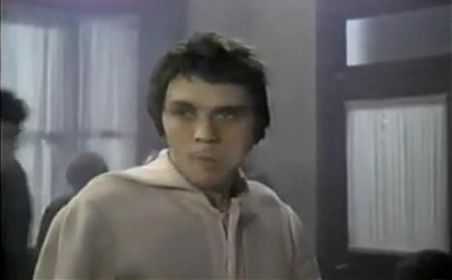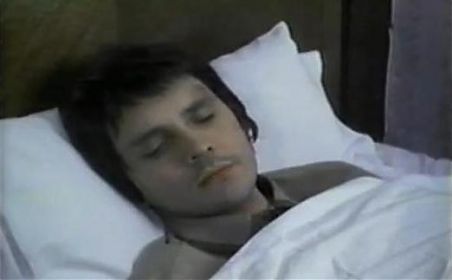The Mind of Mr Soames
Monday July 13, 2009 in 70s cinema | terence stamp
After two decades I’ve finally done it. One of the most obscure movies ever made has finally dropped into my hands. In 1970 Amicus films made The Mind of Mr Soames starring Terence Stamp. Some background: Amicus are best remembered for their series of portmanteau horror films in the 60s and 70s. Stamp is best known for playing wide eyed innocence combined with a forgivable cockney charm, most movingly in Billy Budd (1962), chillingly in The Collector (1965) and, much later, with a lot of humour and gravitas in The Hit (1984). The Mind of Mr Soames brings together the very 70s contemporary look of the Amicus fantasy film with Stamp at his childlike best.
Stamp plays John Soames, a 30 year old man waking from a lifelong coma. He rises from his marathon sleep as essentially a baby in a man’s body, and it’s the duty of a stiffly military type (played by Nigel Davenport) to apply a programme of education to bring Mr Soames up to speed. It’s not easy, and anyone having ever dealt with babies and toddlers will quickly concur that a grown man throwing a tantrum might not be one of life’s pleasures. And where a film featuring an actor faking the mannerisms of a baby could go horribly wrong, it’s a credit to Stamp that he manages to pull it off so well with great wit and a dash of menace. And incidentally, this is the last of the modest run of films that featured the youthful Stamp; when he re-emerged in 1978 as General Zod in the Superman films he really had grown up.
The ever-reliable Robert Vaughn also stars as an American surgeon, initially called in to revive Soames but who then stays on to criticise Davenport’s archaic teaching methodology. Bearded and experimenting with 70s cashmere, it could be argued that Vaughn is attempting to shrug off his Man From Uncle image. Whatever his success rate, he’s still reliably good. His character argues that Soames should be allowed to play and be given a break from the strict regime of mathematics and vocabulary (and I suppose they were still using the term the three rs in 1970; and there were no league tables at the time although Davenport would surely be in favour of them). Vaughn showers Soames with exciting toys and secretly allows him free reign of the institution gardens, infuriating Davenport and inadvertently leading to the patient’s escape. This, I suppose, is what we have been waiting for.
Stamp’s flight inevitably causes consternation for the folks he runs into on the outside. First he upsets a playground game of football and then a lunchtime drinking session in a smoky pub. People appear disturbed by Mr Soames’ peculiar garb, although this may not appear odd to the modern audience as he is wearing a now obvious hoodie. Times really do change, and the final scenes of the film begin to reveal its age. On the run, Soames boards a train full of quaint compartments, where he accidentally menaces a young girl to hysteria. Odder still, as I’ve been led to believe that Stamp was considered quite a catch in his prime and many a young lady would have jumped at the chance of some railway intimacy.
Joking aside, The Mind of Mr Soames does offer a lot of serious food for thought although many of its themes have a tendency to pop in, say hello but then not proceed to go anywhere. For example, it’s suggested that the Vaughn character has an alcohol problem, possibly related to his own family issues, but this isn’t properly followed up. Similarly, Big Brother rears its ugly head several decades too soon as a camera crew roll up to film every second of Soames’ development. Possibly seeming too far fetched for a fantasy film, the idea of filming a subject’s every waking moment must have been dismissed as spoiling an otherwise intelligent film as it isn’t fully pursued.
But so, after two decades of searching I was not disappointed by The Mind of Mr Soames. It’s an understated film that begs more than one viewing. It’s certainly deeper than the usual Amicus fare. The director is Alan Cooke, who sadly became a hack director for tv, and is based on a novel by the science fiction writer Charles Eric Maine. The guitarist John Williams supplies an odd yet effective soundtrack. Donal Donnelly is effective in a supporting role, and a keen eye might also spot Tony Caunter (Roy Evans in Eastenders) as a disgruntled teacher and Joe Gladwin (Wally in Last of the Summer Wine) as a friendly driver. Vaughn is very good, Davenport perfect for his role but Stamp, as ever when cast wisely, is outstanding. There’s a forgivable quality about his unsullied presence that is particularly effective here.
The Mind of Mr Soames is a sadly ignored and underrated film. Although in some ways its obscurity is a blessing, as there is the danger that the still interesting theme might be picked up by the Hollywood remake brigade. I can see Jim Carrey really going for it, and possibly Daniel Day Lewis if he got to it earlier in his career. If it happens, and whoever takes the lead, I’d like to see Terence Stamp reappear in a remake in the Nigel Davenport role. Why not? Michael Caine has been allowed to indulge in the remakes of some of his classics so why not Stamp? Although, like Amicus films and the early 1970s, the childlike charm of cinema is a thing of the past.
Comments [2]

